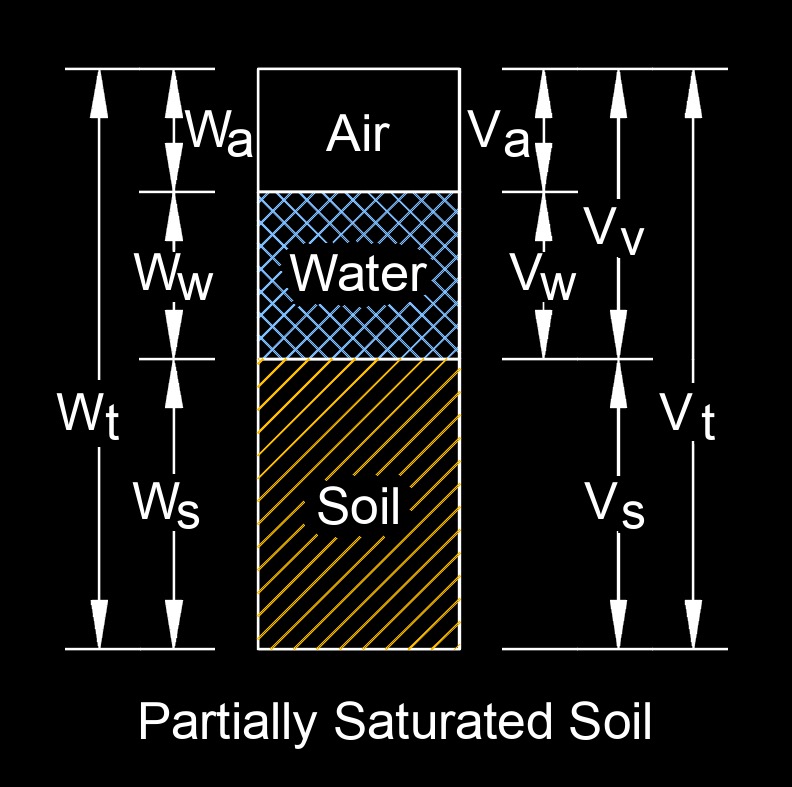Dry Unit Weight
Dry Unit Weight Formula |
||
|
\( \gamma_d \;=\; \dfrac{ W_s }{ V_t } \) (Dry Unit Weight) \( W_s \;=\; \gamma_d \cdot V_t \) \( V_t \;=\; \dfrac{ W_s }{ \gamma_d } \) |
||
| Symbol | English | Metric |
| \( \gamma_d \) (Greek symbol gamma) = Dry Unit Weight | \(lbm \;/\; ft^3 \) | \( N \;/\; m^3 \) |
| \( W_s \) = Weight of Soil | \(lbf\) | \(N\) |
| \( V_t \) = Total Volume of Soil | \(ft^3\) | \(m^3\) |
 Dry unit weight, abbreviated as \( \gamma_d \), is the weight of a soil sample after all moisture content has been removed. It represents the weight of the solid components of the soil, excluding any water present.
Dry unit weight, abbreviated as \( \gamma_d \), is the weight of a soil sample after all moisture content has been removed. It represents the weight of the solid components of the soil, excluding any water present.
Determining the dry weight of a soil sample is important for various soil analyses, as it allows for accurate measurements of soil properties and constituents. Some common tests and analyses that require dry weight measurements include determining soil organic matter content, soil texture, nutrient content, and soil compaction. The process of obtaining the dry weight involves removing all moisture from the soil sample. This is typically done by drying the sample in an oven at a specific temperature for a specified duration. The most common standard method is to dry the soil sample until a constant weight is achieved, indicating that all moisture has been removed. Once the sample has reached a constant weight, it is considered to be at its dry weight.
By measuring the dry weight of a soil sample, researchers, agronomists, and soil scientists can accurately quantify the solid components of the soil and perform various analyses to understand its properties and characteristics. The dry weight is used in calculations, such as determining the percentage of organic matter, soil texture class, or nutrient content on a weight basis.

